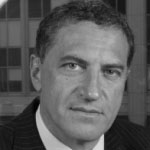
Meet Laurent Lafosse
Hello, Laurent Lafosse. Can you tell us about yourself?
Laurent Lafosse : Hello, I’m 62 years old and I am an orthopaedic surgeon at a private clinic in Annecy, France (the Clinique Générale d’Annecy). I specialise in upper limb and spine surgery. Since the 2000’s I have specialised exclusively in upper limb surgery, and have spent the last ten years operating on the shoulder.
Tell us about your career.
Live Surgery is, to me, an extraordinary tool for the continued progress and improved teaching of our speciality.
LL : I began in Paris as a general orthopaedic surgeon, specialising in spine surgery, peripheral nerve surgery (the plexus, microsurgery, replantation…) and upper limb surgery.
In 1989 I went into private practice at the Clinique Générale d’Annecy as an upper limb surgeon.
Studying under my mentors in surgery of the shoulder, Daniel Goutallier and Didier Patte, was a decisive period in my career, and they continue to inspire me today.
During the 2000’s I left for the States to meet world renowned surgeons who had accomplished ground-breaking work in shoulder surgery; Bigiani, Wolf, Savoie, Gartzman, Warner and Rockwood, amongst others.
I am also involved in various R&D groups concerning prosthetics and also arthroscopy. I was a board member of the French Society of Arthroscopy (SFA) and the European Society of Shoulder and Elbow Surgery (SESSEC) and I am frequent speaker at conferences, both in France, thanks to Gilles Walch, and internationally, particularly in the States, thanks to JP Warner.
Live Surgery is, to me, an extraordinary tool for the continued progress and improved teaching of our speciality. I began to organise and participate in my first live surgeries over 25 years ago and have performed more than 1,000 of these operations.
What does your day-to-day activity consist of?
LL: I dedicate myself exclusively to shoulder surgery.
It has become a real vocation, handed down to me by my mentors, Goutallier and Patte, and one that I am lucky to be able to share with my son, Thibault Lafosse, who joined our orthopaedic surgery team in Annecy a year ago.
Which recent innovation has most impressed you?
LL: When I specialised, the research and development of shoulder surgery were in their infancy. The road ahead was long and there was a huge potential for scientific research and innovation.
Thanks to the leaps in progress made in arthroscopy and open surgery in each pathology, we have been able to make huge advances in shoulder surgery. This is the biggest advantage of hyper specialisation. It’s like in the aviation industry; when you send a rocket into space, you improve ULMs!
Apart from the techniques we use, it is the notion of collaboration and the sharing of knowledge that has evolved in our speciality. In the world of the shoulder, the days of petty in-fighting are past and we form an international surgical fraternity that, in my opinion, live surgery has greatly contributed to.
For the good of the patient, the doctor has a duty to aim for therapeutic excellence. Live Surgery is part of this teaching chain. It is an essential link.
What advice would you give to future practitioners?
I would encourage young surgeons to follow and be involved in all the available learning platforms.
LL: We have at our disposal today a multitude of tools to take care of our patients, but it is important to know how and when to use them.
I would encourage young surgeons to follow and be involved in all the available learning platforms. Read the journals, attend the seminars, go and watch other surgeons operate, consult, attend clinical presentations, go to brain-storming sessions, strive towards the future while keeping your feet on the ground. Publish your work and get involved in scientific societies. Practice in a team environment. Seek out the best tools available to treat the patient.
For the good of the patient, the doctor has a duty to aim for therapeutic excellence. Live Surgery is part of this teaching chain. It is an essential link.
Why is Live Surgery a plus in our domain?
LL: The three stages of surgical treatment are «before», «during» and «after» the operation.. «Before» is the diagnostic, «after» is the result. Seminars and published scientific analysis are essential to improve the diagnostic through study of the results.
For the «during», technical journals, videos and 3D animations are indispensable to the learning process, but only live surgery can communicate the surgical reality.
There are no hidden acts, no editing out of difficult moments, no cheating. It is «surgical truth».
Live Surgery does of course detail all the technical stages of the operation, but more importantly, it shows how a surgeon reacts when faced with a complication, the analytical process as he confronts and finds the solution with a single aim; to give the patient the best possible outcome. Only Live Surgery can show this process with absolute transparency. In reality all our interventions are «live surgeries» as a surgeon is never alone in an operating room…
Our trade is transparent by definition; we have a medical team beside us. This epitomises the tradition of transmission and sharing within our community.
I consider Live Surgery to be a vital link in the sharing of knowledge in our profession.
Can you tell us about the live surgery on the 12th September?
LL: We will be repairing a type 2 rupture of the supraspinatus muscle with an inflamed long biceps and a lesion on the upper subscapularis.
Philippe Valenti presented the case to me and I have approved the operating procedure.
It is an ideal subject for a live surgery because it is a frequent case and the progression of the operation is interesting.
On 12th September I will demonstrate my usual procedure for such a case. Philippe and I have ensured that all the conditions necessary are in place so that I can operate in the same conditions as at the clinic in Annecy.
